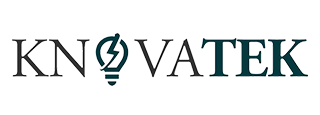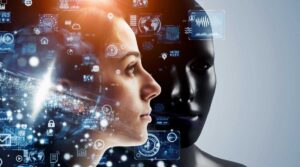Artificial Intelligence (AI) has proven to be a game-changer in various fields, from data analysis to autonomous vehicles. But can machines be creative too? The intersection of AI and creativity has sparked fascination and debate among experts and enthusiasts alike. In this blog post, we delve into the intriguing world of AI and creativity to explore whether machines can genuinely exhibit creativity and the implications of this newfound AI capability.
The Nature of Creativity: Human vs. Artificial
Defining Creativity: An Elusive Concept
Creativity is often described as the ability to produce original and valuable ideas or products. It involves combining existing knowledge and insights in novel ways to generate something new and meaningful. Historically, creativity has been attributed to human intellect and emotion, making it seem inherently human.
AI and Creativity: Expanding Horizons
Advancements in AI have challenged the traditional notion of creativity. AI systems, fueled by sophisticated algorithms and neural networks, have demonstrated the ability to produce creative outputs, such as art, music, and even literature. But does this mean AI is truly creative, or is it merely mimicking human creativity?
The Evolution of AI Creativity: From Imitation to Innovation
Mimicry vs. Genuine Creativity: The Turing Test
In the early stages of AI development, machines primarily imitated human behavior. The Turing Test, proposed by Alan Turing in 1950, assessed a machine’s ability to exhibit human-like intelligence. However, this imitation-based approach didn’t encompass genuine creativity.
Creative AI Algorithms: Beyond Imitation
As AI evolved, creative algorithms emerged, capable of generating content that appeared original and innovative. For example, AI-generated artwork has garnered attention and even been featured in galleries. Creative AI algorithms leverage vast datasets to generate content, pushing the boundaries of what machines can achieve.
AI in the Creative Arts: Collaborators or Competitors?
AI-Generated Art: Pushing Boundaries
AI-powered generative models, like Generative Adversarial Networks (GANs) and Variational Autoencoders (VAEs), have opened new avenues in the art world. These algorithms can create stunning paintings, sculptures, and even 3D models, leading to collaborations between artists and machines.
AI-Enhanced Music: Composing New Melodies
AI has stepped into the realm of music composition as well. With algorithms that analyze existing music and generate new melodies based on learned patterns, AI has collaborated with musicians to produce original pieces that captivate audiences.
AI Creativity in Writing: The Pen of the Machine
Automated Content Generation: Expanding Possibilities
AI-driven content generation tools are becoming popular among writers and marketers. These tools analyze data and generate written content, including blog posts, product descriptions, and social media updates. While they aid in the writing process, questions arise about the originality and human touch in AI-generated content.
AI-Authored Novels: Blurring the Lines
In a surprising turn of events, AI-generated novels have made their way into the literary world. Although the quality and coherence of these AI-authored books might be debatable, they raise intriguing questions about the role of AI in creative writing.
The Spark of Imagination: Can AI Truly Create?
The Eureka Moment: AI’s Limitations
While AI algorithms can produce impressive creative outputs, they lack the eureka moment—the spark of imagination that ignites the creation of something truly novel and groundbreaking. Human creativity is deeply rooted in emotions, personal experiences, and the subconscious mind, aspects that current AI models can’t replicate.
Creativity as Emergence: AI as a Tool
AI’s creative capabilities are better understood as emergence, where the system combines learned patterns to produce novel outputs. AI remains a tool, dependent on human inputs and training data to generate creative works. It may inspire human creativity, but it can’t replace the essence of human imagination.
Ethical Considerations: The Role of the Creator
AI and Intellectual Property: Ownership of Creations
As AI becomes more involved in the creative process, questions arise about intellectual property rights. Who owns the creations generated by AI algorithms? The debate over authorship and copyright for AI-generated content challenges the existing legal framework.
AI Bias in Creativity: Unconscious Prejudice
AI algorithms learn from vast datasets, including human-generated content. This data can contain biases, which are inadvertently reflected in AI-generated works. It raises concerns about AI amplifying societal prejudices in creative outputs, impacting artistic expression and diversity.
AI in Creative Exploration: Beyond Human Imagination
AI as an Idea Generator: Expanding Creative Horizons
AI algorithms have shown promise in generating innovative ideas and concepts that might not have occurred to humans naturally. For example, AI-powered brainstorming tools can offer fresh perspectives and unconventional solutions to complex problems, stimulating human creativity.
Exploring Uncharted Territories: AI in Design and Architecture
In fields like design and architecture, AI’s ability to explore vast design spaces and generate unique patterns has opened doors to unprecedented possibilities. Architects and designers can collaborate with AI to envision cutting-edge structures and spaces that push the boundaries of traditional design.
AI-Enhanced Collaboration: Fostering Creative Synergy
The Fusion of Talents: Humans and AI as Co-Creators
The true potential of AI in creativity lies in its collaborative nature. When AI and human creators come together, they form a powerful partnership, leveraging the best of both worlds. AI augments human abilities, providing insights and inspiration, while humans infuse their emotional depth and contextual understanding into the creative process.
AI Tools for Creative Professionals: Empowering Artistic Vision
AI-powered tools are becoming increasingly accessible to creative professionals, offering assistance in various stages of the creative journey. From AI-generated concept art to style transfer techniques that blend artistic styles, these tools empower artists to explore new avenues of expression.
Creative AI in Education: Nurturing Tomorrow’s Innovators
AI as an Educator: Fostering Creativity in Students
In the realm of education, AI can play a vital role in nurturing creativity in students. Personalized AI-driven learning platforms can adapt to individual students’ strengths and weaknesses, fostering an environment where creative thinking and problem-solving are encouraged.
AI in Creative Fields: Bridging the Gap
As AI becomes an integral part of creative fields, educators must equip students with AI literacy and understanding. By integrating AI education into creative curriculums, future artists, writers, and musicians can leverage AI tools effectively, enhancing their creative outputs.
Looking Ahead: The Future of AI and Creativity
AI Art Exhibitions: Appreciating Machine Creativity
AI-generated art has already gained recognition in the art world, with exhibitions and showcases dedicated to machine creativity. These events not only challenge traditional notions of artistry but also celebrate the exciting possibilities AI brings to the creative realm.
AI as a Source of Inspiration: A Catalyst for Human Imagination
As AI continues to evolve, it acts as a wellspring of inspiration for human creators. By analyzing vast datasets and patterns from diverse sources, AI can present creators with novel insights, propelling their artistic endeavors to new heights.
Conclusion: The Collaborative Future of Creativity
In the quest to understand whether machines can be creative, we have witnessed AI’s remarkable ability to produce original and innovative works. AI has emerged as a creative partner, expanding the horizons of human imagination and artistic expression.
As we embrace this transformative collaboration, it is essential to address ethical considerations, such as bias and ownership of AI-generated creations. Additionally, AI education and literacy must be prioritized to empower future generations with the tools and knowledge to thrive in an AI-driven creative landscape.
The future of AI and creativity lies in the human-AI partnership, where humans’ emotional intelligence and intuition combine with AI’s analytical prowess. Together, we can unlock the full potential of AI in creativity, inspiring new artistic frontiers and shaping a world where human ingenuity and machine intelligence synergize for unprecedented creative achievements.
So, can machines be creative too? The answer lies in the harmony of human creativity and AI innovation, transforming the way we envision and create art, music, literature, and more. By nurturing this symbiotic relationship, we embark on an extraordinary journey into a future where creativity knows no bounds, powered by the collaborative genius of humans and machines.










